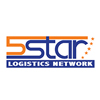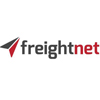
Code: Description
ABI: Automated Broker Interface
ACS: Automated Commercial System
AWB: Air WayBill
BAF: Bunker Adjustment Factor
B/L: Bill of Lading
CABAF: Currency and Bunker Adjustment Factor
CAF: Currency Adjustment Factor
CBM: Cubic Meters
CFS: Cargo Freight Station Consolidation Facility or Warehouse
CIF: Cost Insurance and Freight
Consignee: Owner or Buyer of Goods
CNTR: Container
CY: Container Yard
C & F: Cost & Freight
D/O: Delivery Order
DC: Dry Container
EAN: European Authority Number (Vide Electronic Commerce)
EXW: ExWorks
GOH: Garments on Hangers
FCA: Free Carrier
FCL: Full Container Load
FCR: Forward Cargo Receipt
FOB: Free On Board
HAWB: House Airwaybill (airfreight – issued by Freight Forwarder)
HBL: House Bill of Lading (seafrieght – issued by Freight Forwarder)
HQ: High Cube Container
IATA: International Air Transport Association
ITF: International Terminal Fee
LC: Letter of Credit
LCL: Less Container Load
LOLO: Lift On Lift Off
MAWB: Master Airwaybill
MCC: Multi-Country Consolidation
NOR: Non Operating Reefer
OBL: Ocean Bill of Lading
POL: Port of Loading
QR: Quick Response
RF: Refrigeration Container
Shipper: Vendors or Buying Agents
TEU: Twenty Foot Equivalent Unit
THC: Terminal Handling Charge
UCC: Uniform Code Council
ABI – ABI stands for Automated Broker Interface. This is the part of Customs Automated Commercial System (ACS) that allows participants to electronically file Import data with Customs. ABI features include filing and clearing of import freight, payment of Customs duties, querying of quota and tariff status, and interface with other government agencies. This program is available to brokers, importers, carriers, port authorities, and independent service centers. Currently over 96% of all entries filed with Customs are filed electronically via the ABI System.
ACH – ACH stands for Automated Clearing House and is part of the Customs ACS. ACH allows for the payment of duties, taxes, and fees due on an import entry through an electronic funds transfer to a bank designated by the U.S. Treasury department. Both importers and brokers can pay fees using the statement process which allows a group of entries to be paid all together. It used to be that each entry had to be paid separately with individual checks.
ACS – Automated Commercial System (see ABI)
AD VALOREM (DUTY) – According to Value. This is one of several methods of calculating duties owed to U.S. Customs. This most common method determines duty based on the value of the goods times a percentage rate. For example, a shipment of televisions valued at $500.00 with an AD VALOREM duty rate of 10% would have duty of $50.00.
AIR WAYBILL – A document that covers both domestic and international flights transporting goods to a specified destination. This is a non-negotiable instrument of air transport that serves as a receipt for the shipper, indicating that the carrier has accepted the goods listed and obligates it to carry the consignment to the airport of destination according to specified conditions.
Master Air Waybill (MAWB) – this air bill is issued by the carrier and typically will show the exporting forwarder as the shipper and the forwarder’s import counterpart as the consignee. This is the shipping agreement between the forwarder and the air carrier. A master bill may have more than one house bill consolidated under it. A MAWB can also be consigned from a shipper to a consignee on an airline bill. Companies can arrange transportation directly with carriers and are not required to use a forwarder.
House Air Waybill (HAWB) – this air bill is issued by the forwarder and will typically show the supplier (ex: ABC Manufacturing) as the shipper and the import customer (ex: XYZ Company) as the consignee. This is the shipping agreement between the customer and the freight forwarder. The House bill covers just one shipping agreement and will still require an air carrier’s master bill to move the freight.
AMS – AMS stands for Automated Manifest System and is another part of Customs ACS. AMS allows Customs to get information contained on ocean bills of lading and airway bills electronically. It is a cargo inventory control and release notification system for the use of air, ocean, and rail carriers and speeds the flow of cargo and entry processing. While most ocean carriers are on the AMS system, not all carriers are using the electronic system. Additionally, while some air carriers in some ports use AMS, their counterparts in different ports may not.
ANTI DUMPING DUTY (ADD) – These duties are charged over and above normal Customs Duties. These duties are imposed to discourage the sale of foreign goods in the market at low prices which would be detrimental to local U.S. manufacturers. For example, a radio which normally sells in Japan for $100.00 would be considered dumped on the U.S. market if it was sold to a U.S. importer for $50.00. Anti Dumping duties are assessed until the goods are sold for a fairer market value.
ARRIVAL NOTICE- This is a document which advises consignees that freight has arrived or is arriving from overseas. They are usually sent by carriers or forwarders before the freight arrives to give the importer or broker a heads up for incoming freight.
BACK TO BACK – A back to back consolidation of a MAWB or consolidation with only one HAWB in it.
BILL OF LADING – The document issued on behalf of the carrier describing the kind and quantity of goods being shipped, the shipper, the consignee, the ports of loading and discharge and the carrying vessel. It serves as document of title, a contract of carriage, and receipt for goods. if it is straight B/L, the foreign can obtain the shipment from the carrier by simply showing proof of identity. If a negotiable B/L is used, the buyer must first pay for the goods, post a bond, or meet other conditions agreeable to the seller.
Master Bill Of Lading (MBL) – this bill of lading is issued by the ocean carrier and typically will show the exporting forwarder as the shipper and the forwarder’s import counterpart as the consignee. This is the shipping agreement between the forwarder and the ocean carrier. A master bill may have more than one house bill consolidated under it. A MBL can also be consigned direct from a shipper to a consignee on a bill of lading. Companies can arrange transportation directly with carriers and are not required to use a forwarder.
House Bill Of Lading (HBL) – This bill of lading is issued by the forwarder and will typically show the supplier (ex: ABC Manufacturing) as the shipper and the import customer (ex: XYZ Company) as the consignee. This is the shipping agreement between the customer and the forwarder. The house bill covers just one shipping agreement and will still require an ocean carrier’s master bill to move the freight.
BOND – The term bond is used in several different ways in importing. There are surety bonds, in-bond, posting bond, and bonded warehouses. Each is very different. Normally, when Customs requires a bond, they mean that a surety bond is needed for the import of the shipment. A surety company allows the broker to prepare a bond which covers U.S. Customs should additional duties or penalties come due on an entry. It insures that Customs will receive their revenue from the surety company if the importer refuses or is unable to pay. The second most common usage for a bond is for shipments which are sent in-bond from one U.S. port to another U.S. port without clearing Customs first.
BONDED WAREHOUSE – A building authorized by Customs authorities for storage of goods on which payment of duties is deferred until the goods are removed. There are different types of bonded warehouses, depending on the use desired by the owner or lessee.
BREAK BULK – This term refers to the breaking down of a consolidation. Consolidations occur when several shippers share one freight rate, getting a better rate than they would individually. Usually, their cargo is grouped together in one ocean container or air shipping unit (container or pallet). The Break bulk department (typically referring to just air inbound) is responsible for tracking the incoming consolidation and breaking it down according to consignee upon arrival.
BROKER – Also known as a Customhouse Broker. A licensed broker is one who has passed the Customs brokers exam and FBI background check and is authorized by U.S. Customs to conduct Customs brokerage. This person is thoroughly knowledgeable about Customs regulations and is responsible for maintaining those regulations. The term broker can also be used more broadly to refer to an individual or a company that conducts Customs business on behalf of an importer.
BULK SHIPMENTS – Shipments which are not packaged, but are loaded directly into a vessel’s holds. Examples of commodities that can be shipped in bulk are ores, coal, scrap, iron, grain, rice, vegetable oil, tallow, fuel oil, fertilizers, and similar commodities. Large machinery or other items which will not fit into a standard ocean container are also considered bulk shipments.
CARGO – Goods, merchandise or commodities of every description which may be carried aboard a vessel or air craft, in consideration of the freight charged; does not include provisions and stores for use on board.
CARGO SELECTIVITY – Selectivity is a module in Customs ACS that identifies the level of examination recommended for an import shipment. Once selectivity has been made, the broker gets the decision via ABI.
CARNET – A Customs document permitting the holder to carry or send merchandise temporarily into certain foreign countries for display, demonstrations, or similar purposes without paying duties or posting bonds. A carnet is like a passport for freight, allowing it in and out of countries with minimal paperwork. Freight covered by a carnet is only imported temporarily into foreign countries. It may not remain permanently in another country and must be exported.
CARRIER – Usually means Steamship Company, but can also refer to trucking company, airline, or railroad as a transporter of cargo.
CARRIERS CERTIFICATE – A document issued by the importing carrier or forwarder certifying the named party is the owner of the shipment described in the document and that the carrier does not hold a lien against the shipment. This document is used in the event the shipment remains under Customs control after it is picked up from the carrier’s terminal. A carriers certificate is not required in all ports.
CENSUS WARNING – The Bureau of Census is another government agency that is linked up to the Customs ABI system. This agency collects data on volumes, commodities, values and origin of imported goods. When a broker receives a census warning via ABI, it means that the data entered for that shipment is out of line with the statistics kept by the Bureau of Census for that commodity.
CERTIFICATE OF ORIGIN – A specified document, required by certain foreign countries for tariff purposes, certifying the country of origin of the merchandise. Sometimes requires the signature if the consul of the country to which it is destined.
CFS-CONTAINER FREIGHT STATION – A facility for loading and unloading consolidation and handling of LCL shipments. A CFS is also typically a bonded warehouse.
CLEAN BILL OF LADING – A bill of lading receipted by the carrier for the merchandise in good condition (no damage, loss, etc.- apparent) and which does not bear such notations as “Shipper’s load, stow and count”.
COB – Confirmed on Board is a term used in air freight when a shipment has been confirmed that it is on flight. A COB will generally not be given until the flight has taken off (wheels up) which eliminate any last minute changes.
COLLECT FREIGHT – Freight charges payable at a destination provided the vessel/aircraft delivers the goods as specified.
CO LOAD – Co-loading is when one NVOCC or air freight forwarder will combine their freight with another NVOCC or freight forwarder and the shipments move in a single consolidation.
COMMERCIAL INVOICE – A statement of transaction between a seller and buyer prepared by the seller, and a description of the merchandise, price, and terms. Other information which must be included on a commercial invoice includes country of origin, currency, and the shippers and consignees name and address.
COMMODITY – Any article of commerce; the goods or merchandise.
COMMON CARRIER – Transporter who holds himself out to the general public for the transportation of goods over a define route and according to a regular schedule.
COMPOUND DUTY – Customs duty that is figured out based on multiple criteria. An example would be a rate of 27.6 cents per kg + 15%.
CONSIGNEE – Party who is to receive imported goods; usually the buyer.
CONSIGNOR – The person or company shown on the bill of lading or air bill as the shipper.
CONSOL – Consolidation. When the cargo from two or more shippers is loaded into the same container or on the same pallet and tendered together to the carrier as one shipment on one MAWB or MBL.
CONSOL DOCS – Consolidation Documents. The documents that are sent to the overseas agent to release the consolidation container from the steamship line or air carrier and clear it through Customs.
CONTAINER – An article of transport equipment typically referred to in ocean shipments. These are rectangular steel boxes used for transporting goods in multiple modes. Common sizes are 20 foot, 40 foot and 45 foot length. All containers are the same width. No standards exist for height.
CONTAINER YARD (CY) – An area where containers are stored.
COUNTERVAILING DUTY (CVD) – An additional duty imposed to counter unfairly subsidized products paid to foreign suppliers in certain countries, by the government of that country for the purpose of promoting export.
CST – Commodity Specialist Team. These Customs employees know everything there is to know about the commodity for which they review.
CUSTOMS – The authorities designated to collect duties levied by a country on imports and exports. The term also applies to the procedures involved in such collection.
CUSTOMS TARIFF – Import duty schedule, usually commodity specific, often categorized by harmonized numbers.
DEMURRAGE – Money paid by a shipper or consignee for occupying space at a port beyond a specific period – pending cargo Customs clearance; money paid to the ship owner for delay in loading/discharging beyond agreed time scheduled in charter party.
DETENTION – A penalty charge assessed by the carrier for the detention of containers by shippers or receivers of freight beyond a specific free time. This is also commodity referred to as per diem.
DEVAN – The unloading of a container.
DIRECT SHIPMENT – A direct shipment is one where the cargo travels on a steamship line bill of lading or air carrier waybill instead of a forwarders bill of lading or air bill.
DISCHARGE – The point where cargo is unladed from the vessel or aircraft. Also known as the unlading port.
DOCUMENTS – Papers customarily attached to foreign drafts, consisting of ocean bills of lading, air waybills marine insurance certificates, and commercial invoices, and where required, including certificates of origin and consular invoices.
DRAWBACK – Articles manufactured or produced in the United States with the use of imported components or raw material ans later exported are entitled to a refund of up to 99% of the duty charged on the imported components. The refund of duty is known as drawback.
DRAYAGE – The movement of freight via a trucker.
DUTY-A tax imposed on imports by the Customs authority of a country.
Duties are due within 10 working days from the merchandise release date.
EDI – Electronic Data Interchange. The generic term for a standardized international computer language designed for the transmission of common business data, such as invoices and purchase orders.
ENTRY – Paperwork submitted to U.S. Customs by a broker or importer to obtain release of imported merchandise. the entry package typically consists of a CF-3461, commercial invoice, packing list, air waybill or ocean bill of lading, and CBP form CF7501.
FCL– Full Container Load referring to the maximum amount of cargo that can be carried on a container, either by weight or volume. A FCL shipment will be tendered to the steamship line already loaded in the steamship lines container.
FEEDER SERVICE – A steamship service which incorporates a small vessel to transport containers the mother ship. Sometimes the feeder vessel is listed on the ocean bill of lading.
FIRMS CODE – Firms codes are assigned by U.S. Customs to designate where cargo will be located while it is still in bond. All airlines, piers, CFS and bonded warehouses will have a firms code.
FOREIGN TRANDE ZONE – A port designated by the government of a country for duty-free entry of any non- prohibited goods. Merchandise may be stored, displayed, used for manufacturing, etc., within the zone and re-exported without duties being paid. Duties are imposed on the merchandise or items manufactured from the merchandise only when the goods pass from the zone into an area of the country subject to the Customs Authority. Also called a Free Trade Zone.
FORWARDING – When Gallagher Transport Int’l. acts as a forwarder, it generally involves making all transportation arrangements for the customer. It does not dictate what type of ocean/air transportation services G.T.I. will provide.
FREIGHT CHARGE – The money charged by the carrier for the transporting goods.
GATEWAY – A point at which freight moving from one territory to another is inter-changed between transport lines.
GATT – General Agreement on Tariffs and Trade. A multilateral (multi-country) treaty whose purpose is to help reduce trade barriers between the member countries. Another purpose is to promote trade through tariff concessions.
GENERAL ORDER (G.O.) – Goods which have gone into General Order have remained at a pier or airline beyond the legal Customs limit for filing an import entry. Customs sends these shipments to a G.O. warehouse and may auction or destroy the goods after a specified amount of time.
GOODS– Cargo shipped by sea or air.
GROSS WEIGHT – The full weight of the shipment, including goods and packaging.
HMF – Harbor Maintenance Fee. This is a port user fee associated with all ocean import shipments and is collected to help maintain U.S. harbors.
HARMONIZED TARIFF SCHEDULE (HTS) – An international commodity classification system, developed under auspices of Customs Cooperation Council, adopted by the United States in 1989 and increasingly the most widely accepted import/export classification methodology. Replaces Schedule B export codes and Tariff Schedule of the U.S. import codes.
HIGH CUBE – Denoted HC or HQ. A 40′ ocean container being 9’6″ in height as opposed to the standard 40′ container freight of 8’6″. This container has 26.6% more space and the rates are generally higher at the same percentage.
HOUSE AIR WAYBILL – see Bill of Lading.
IDF – Import declaration form. An IDF is applied for and obtained from customs for any Commercial Importation. The IDF contains Value of the cargo for tax calculation, Quantity, Quality and Classification (HS Code)
IN BOND – A term applied to the status of merchandise admitted provisionally to a country without payment of duties, either for storage in a bonded warehouse or for trans-shipment to another point, where duties will eventually be imposed.
INBOUND – A term used to describe incoming freight.
INLAND BILL OF LADING – A bill of lading used in transporting goods overland to the exporter’s international carrier.
INTERMODULE – Transportation utilizing more than one transport mode or form of carriage, i.e.; Motor, Rail, Ocean.
I.T.-I.T. stands for Immediate Transportation. This is the Customs document that permits freight to transfer from one port to another prior to clearance. Also see IN-BOND.
LADING – Taking on cargo.
LETTER OF CREDIT (COMMERCIAL (L/C)) – A letter addressed by a bank, at the insurance and responsibility of a buyer of merchandise, to seller, authorizing him to draw drafts to a stipulated amount under specified terms and undertaking conditionally or unconditionally to provide eventual payment for drafts.
LCL – A Less than Container Load shipment is one that is not large enough on volume or weight to fill a container.
LIEN – A Lien is a legal method of attaching a charge due to a shipment. The owner of the goods cannot receive his freight until a lien is paid.
LIQUIDATION – The final determination of duties on an importation. The liquidation date is the date Customs officially closes a shipment file.
MANIFEST – An itemized list by bill of lading or air bill of the kind and quantity of all cargoes loaded abroad a vessel or aircraft.
MANUFACTURER ID (MID) – A term used by Customs for a unique alpha numeric code that identifies manufacturers and shippers of goods in to the U.S..
MASTER AIR WAYBILL – see AIR WAYBILL.
MASTER BILL OF LADING – see BILL OF LADING.
MARKS – Letters, numbers and/or characters placed on a package for purposes of identification.
MPF – Merchandise Processing Fee. The MPF is a user fee paid by the importer on each formal entry of merchandise for consumption. It is a fee collected to cover the expense of Customs commercial operations. MPF is assessed on both air and ocean shipments.
NAFTA – North American Free Trade Agreement. This agreement allows reduced or no duties on products which are determined to be originating goods of the U.S., Canada or Mexico.
NET WEIGHT – The weight of the goods themselves, excluding packaging.
NVOCC – Non-Vessel Operating Common Carrier. These type of companies do not own vessels or aircraft but they buy and sell space provided by carriers.
ON CARRIAGE – Inland freight movement on the importer’s side.
ON HAND – Refers to freight having been made available for pickup by a carrier.
PACIFIC BASIN – The eight major Asian trading countries excluding Japan and China: Hong Kong, Indonesia, Korea, Singapore, Taiwan, Thailand, Malaysia, and Philippines.
PACKING LIST– A document describing how a particular shipment was packed.
PALLET – A low portable platform, usually wooden, on which cargo is attacked for storage or transportation; a skid.
PILFERAGE – The theft of part of the contents of a shipping package.
PNC – Preliminary Notice of Claim. A PNC is filed by a customs broker with the carrier when the cargo is damaged or lost while in the carriers possession.
PRE ALERT – This form is sent out by the forwarding office to the destination office prior to freight arrival at the destination port. It serves to notify the destination office of the shipping details, such as consignee, master and house bill numbers, flight information, and pieces and weight, of an incoming shipment.
PRE PAID – Freight paid at the origin.
PRO FORMA INVOICE – Pro forma invoices are usually created for an import shipment when there is no commercial invoice available. like a commercial invoice, this document records the kinds and quantities of goods to be sent, their value, and important specifications such as weight, size, dimensions, etc.
-Brokers may provide pro forma invoice on behalf of their customer-
PROTEST – Protests are done when an importer or broker disagrees with a Customs decision, typically issues involving classifications and values. Protests must be filed within 90 days of liquidation of an entry.
QUOTA – The quantity of goods of a specific quantity of merchandise to be entered or withdrawn for consumption during a specific period.
Absolute: – Permits a limited number of units of specified merchandise to be entered or withdrawn for consumption during specified periods.
Tariff Rate: – Permits a specified quantity of merchandise to be entered or withdrawn for consumption at a reduced duty rate during a specified period.
QUOTA CHARGE STATEMENT – Statement from supplier/importer regarding any monies charged to purchase Quota.
SETTLEMENT – Payment of air/ocean freight charges (less commission) by the destination office back to the origin office which prepaid the freight charges to the air/ocean carrier. It also divides the freight charge profits between the offices.
SHIPPER – Person or company who contracts with the carrier for the carriage of goods, usually the exporter.
STATEMENT – Payment that allows an importer or broker to pay Customs duties for multiple files and multiple clients with one check or electronic transfer of funds. See also ACH.
SURETY – An obligor on a surety bond, specifically, an entry providing a guarantee for the payment of all government debts, secured by a bond as evidenced by the sureties name and authorized signature in the bond.
T&E – Transport and Exportation. Similar to an I.T. and submitted on the same form. This type of entry is used for goods that will not enter in to the commerce of the U.S. but will be immediately exported. No formal entry or duty will be submitted to U.S. Customs for this type of entry.
TARE WEIGHT – The weight of a container and packaging materials without the weight of the goods it contains.
TARIFF – the schedule of charges, rules and regulations which must be followed. This can be for transportation charges, loading and unloading charges, import duties, etc.
TERMS OF DELIVERY – This refers to the contract of carriage, or delivery terms, of freight. When a air bill or bill of lading is produced, the carrier and shipper will agree upon the transportation responsibilities of the carrier. The most common terms of delivery are below. However, service combinations are possible, such as Port to Door, or CY to CFS, and may be dictated by the carriers rules governing the release of their containers, or perhaps by the limitations of connecting transportation.
Port to Port: – A transportation rate covering carriage only between the carrier’s respective terminals at origin and destination, including relay service. Port-to-Port rates do not include inland freight or transportation to the origin port, or following arrival at the destination port.
Door to Door: – This has two general usages with respect to transportation. The more specific meaning is a service or rate basis under which a single carrier undertakes the transportation of cargo from a shipper’s door to the consignee’s door. This can be via any mode, or combination of modes, of transportation. The term is also used to generally describe the physical movement of cargo, especially in a shipper-packed container, intact through to the consignee without transfer or re-handling of the cargo within the container, typically under seal unless broken for Customs.
CFS-CFS: – An expression describing ocean or through carriage in which cargo is received by the ocean carrier loose (i.e.: not in shipper-packed containers) at their origin terminal (CFS), and then de- containerized at the destination terminal (CFS) for the delivery loose to the consignee.
CY-CY: – (Container Yard to Container Yard) an expression describing ocean/Intermodule transportation in which cargo is received by the carrier in a shipper-packed container for delivery to the consignee for unloading by the consignee. The expression CY-CY does not specify the actual place of cargo acceptance or delivery under the contract of carriage, but only that the shipper is responsible to receive and unload the container. The place of cargo acceptance and delivery must be separately specified.
TEXTILE DECLARATION – Documents supplied by the manufacturer or the importer to indicate origin of textiles used in making the product. The actual label in the garment should match the origin of the textile declaration.
TRANS-SHIPMENT – The transfer from one ship or conveyance to another for further transit.
ULD – ULD or unit load device is a term used by airlines to describe both containers and pallets used to load cargo in airplanes. There are various types of ULD’s and they can be loaded either by the airline or by the shipper.
VESSEL – Every description of watercraft or other artificial contrivance used, or capable of being used, as a means of transportation on water.
VISA – A textile visa is an endorsement in the form of a stamp or an invoice or export control license which is executed by a foreign government. It is used to control the exportation of textiles and textile products to the United States and to prohibit the unauthorized entry of such merchandise into this country.





















